The King Sejong Institute–Korean Cultural Center (KCC) in Hanoi, Vietnam, held a series of special cultural classes from Sept. 20–22, offering participants the chance to experience Hansik (Korean cuisine). The program welcomed both King Sejong Institute students and local residents passionate about Korean culture, giving them an opportunity to explore the philosophy of Korean food while enjoying hands-on cooking activities.
We joined the class on its opening day, Sept. 20. Through this experience, we gained a deeper appreciation for the artistry and philosophy of Korean cuisine.
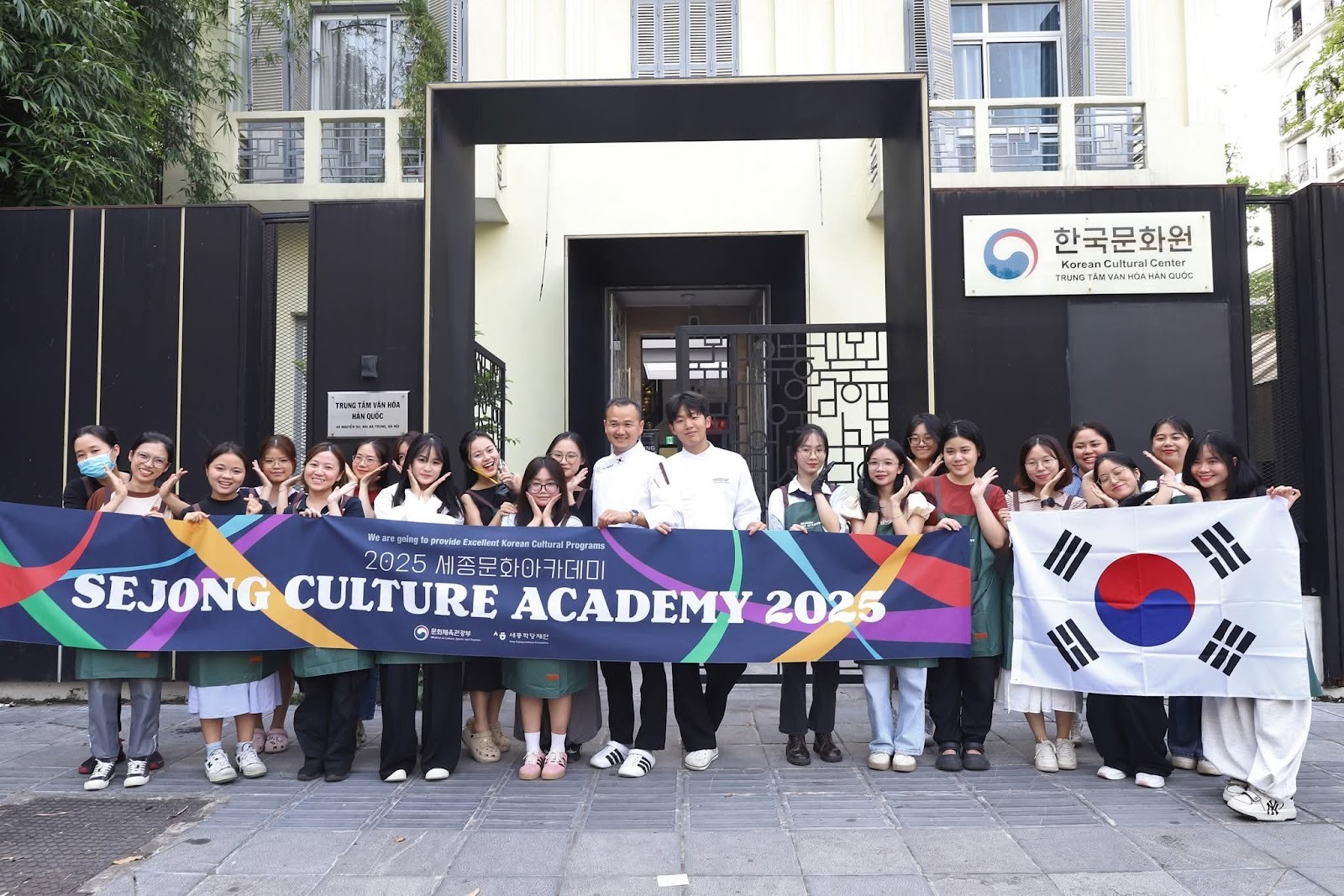
(*) The Hansik experience class was part of a cultural project organized by the Sejong Cultural Academy 2025 under the King Sejong Institute Foundation (KSIF), which aims to promote Korean culture worldwide.
The class was led by Mr. Kim Jong Hyuk, a seasoned expert in Korean cuisine. He has not only worked at numerous high-end hotels in Seoul but also had the honor of preparing the banquet for the Inter-Korean Summit. His presence in the program therefore brought students both great excitement and a deep sense of appreciation.
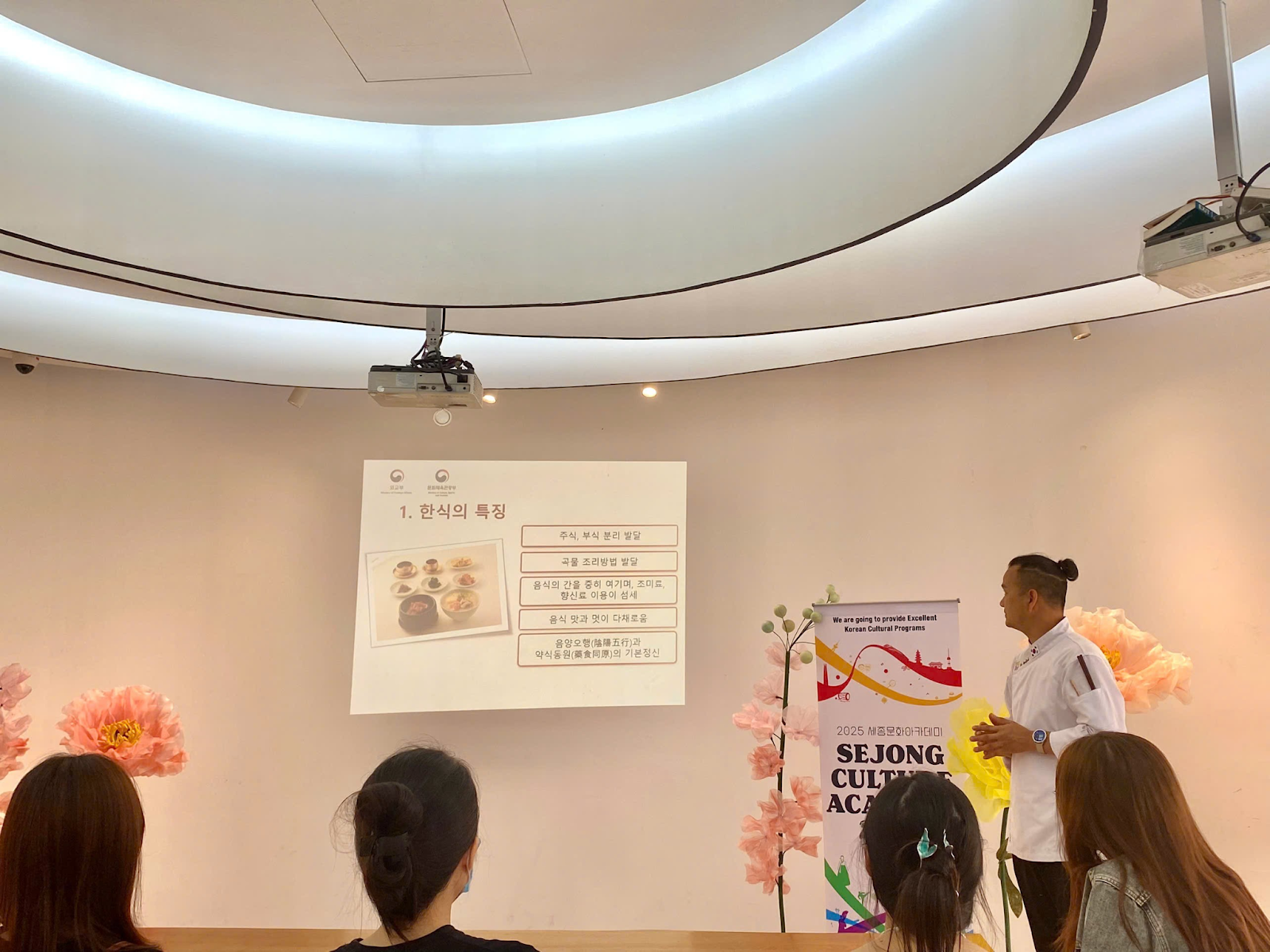
Through hands-on participation, we not only learned how to prepare traditional dishes but also gained a deeper understanding of the values embedded in Korean cuisine. The characteristics of Korean cuisine (Hansik) can be summarized in five main aspects:
First, Hansik has developed with a clear distinction between main dishes (주식) and side dishes (부식), creating a dining structure that is both diverse and harmonious.
Second, grain-based cooking methods are highly varied, ranging from rice, porridge, and rice cakes to noodles, reflecting the central role of grains in Korean life.
Third, Hansik emphasizes seasonings and the delicacy of flavoring, resulting in dishes that are rich in taste while preserving the natural essence of the ingredients.
Fourth, Korean cuisine stands out for its diversity in both flavor and aesthetics, expressed through vibrant colors, elaborate presentation, and the harmonious combination of dishes.
Finally, Hansik embodies the philosophy of yin-yang, the five elements, and the principle of “food as medicine” (약식동원), underscoring the belief that cuisine is not only a means of nourishing the body but also of protecting health and maintaining balance in life.
Within the framework of the class, students were not only introduced to the cultural significance of the traditional Korean table setting (한식 밥상) but also directly took part in every step of the process—from preparing ingredients to cooking dishes and setting the table.
Under the guidance of Chef Kim Jong Hyuk, participants had the opportunity to explore how to create a harmonious balance between main dishes, side dishes, and signature seasonings.
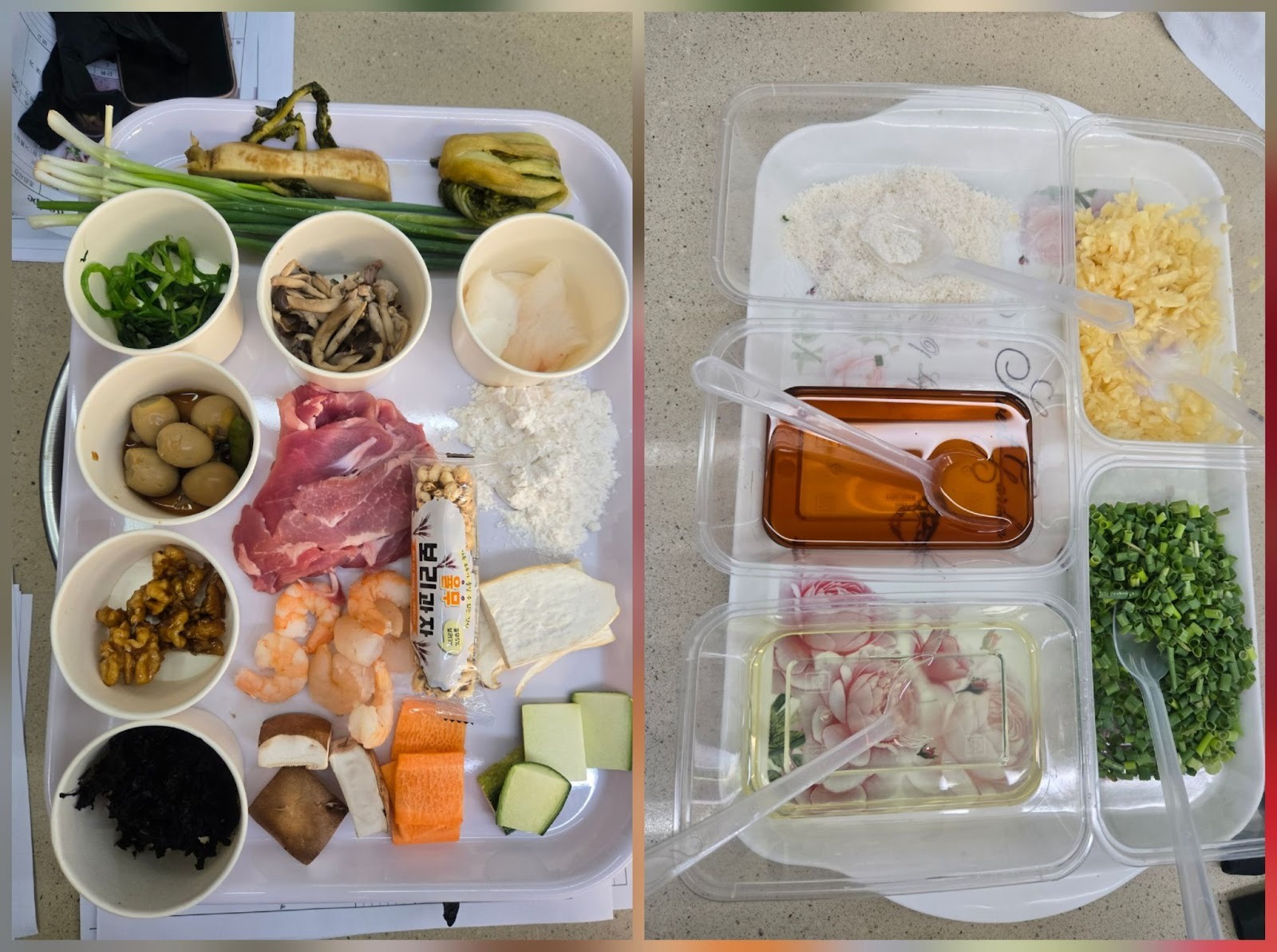
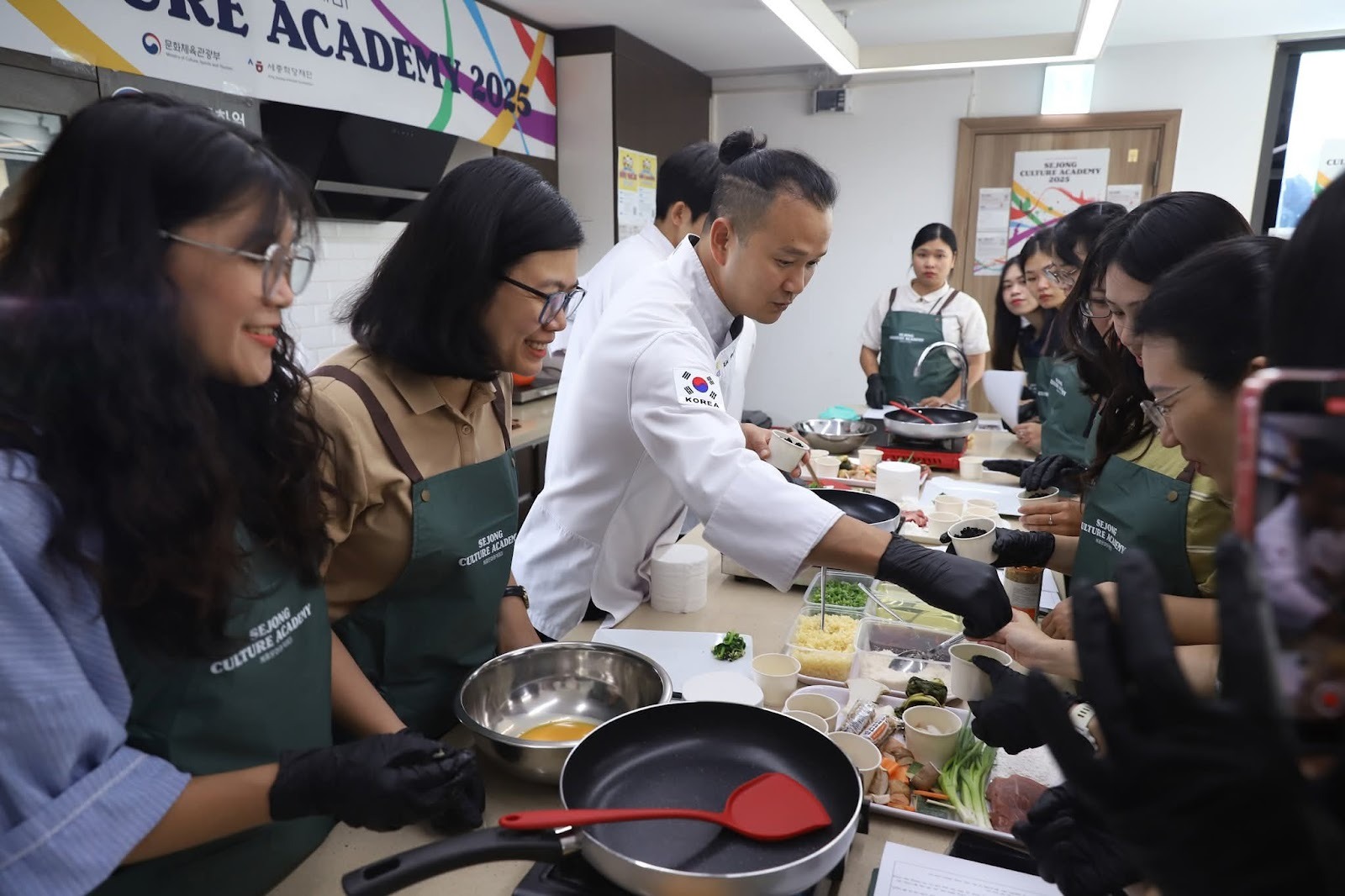
Guided by Chef Kim, we prepared dishes such as Yukjeon (pan-fried beef), Pajeon (scallion pancake), and familiar side dishes (banchan) like seasoned spinach and seaweed—staples in Korean family meals.
It was only through hands-on experience that we realized the meticulousness of the preparation: each slice of meat had to be cut to just the right thickness, lightly coated with flour, dipped in egg, and then pan-fried until golden; while the scallions had to be fresh and green, carefully chopped, so that when fried with eggs, they created a dish both visually appealing and richly flavorful.
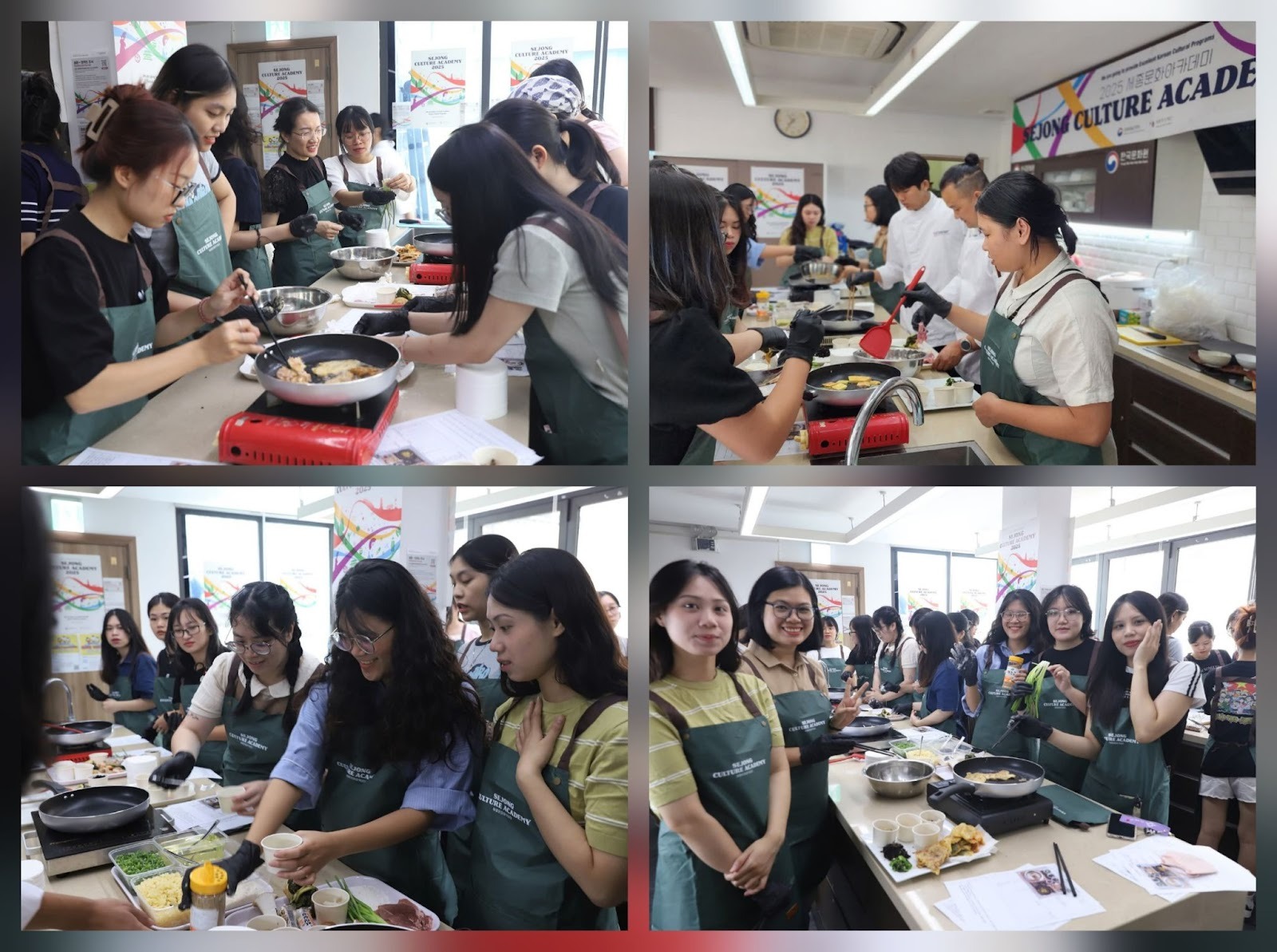
The classroom atmosphere grew lively as each group of students mixed seasonings, fried meat, and stirred eggs together. Laughter and chatter blended with the spreading aroma throughout the kitchen, filling everyone with excitement as they eagerly awaited the final dishes.
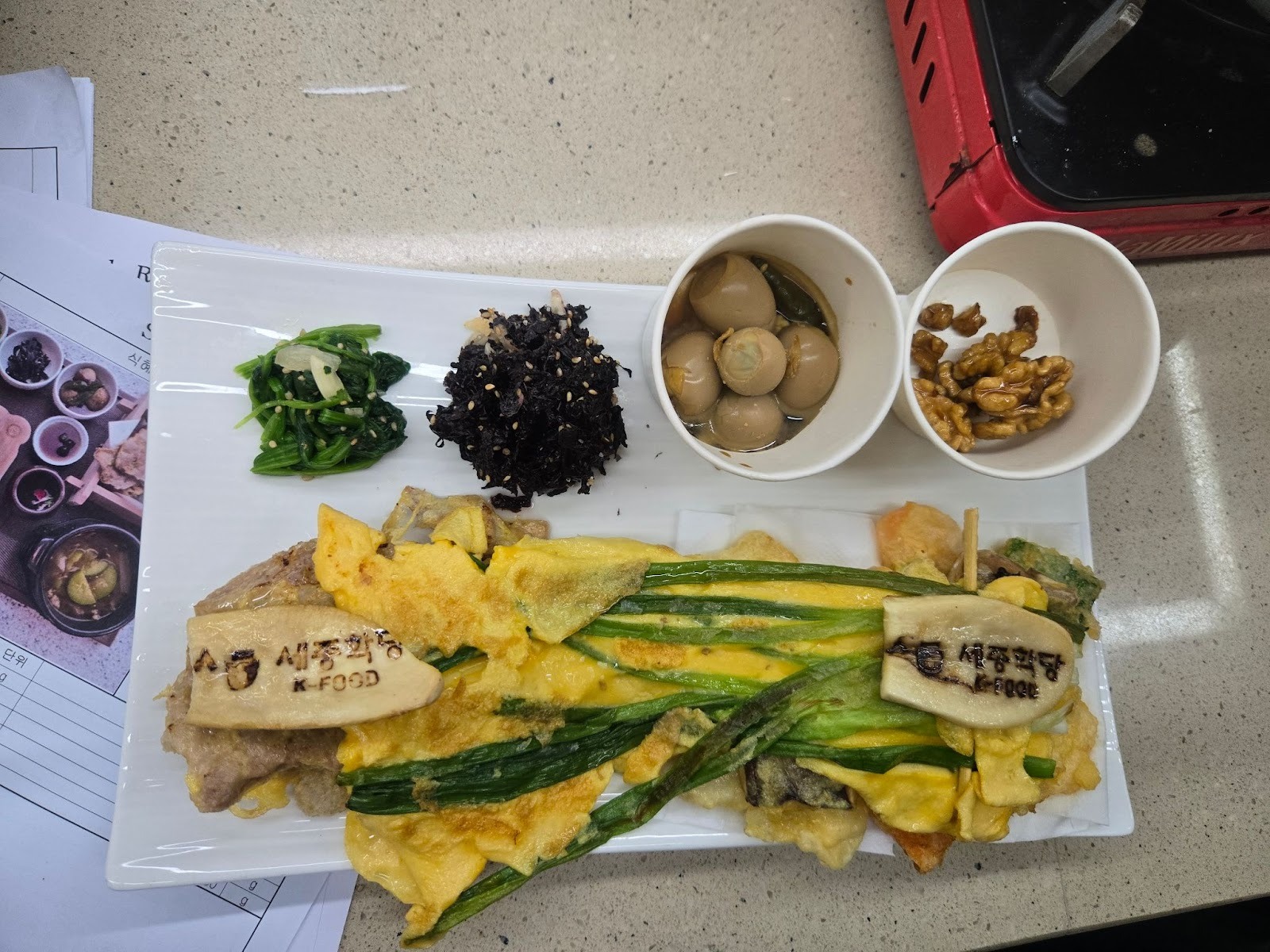
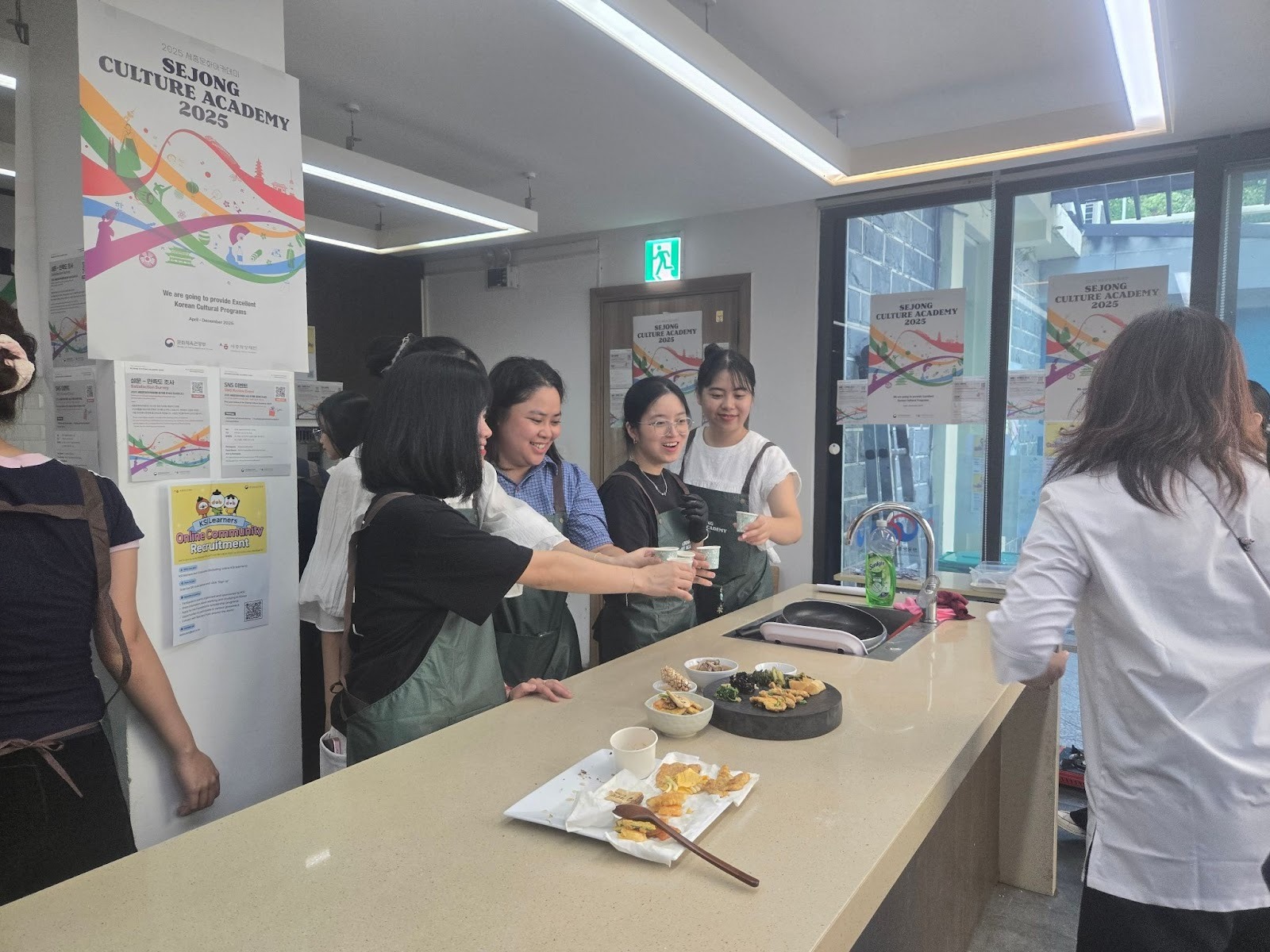
After cooking, Chef Kim guided us in arranging the dishes in the style of a traditional Korean dining table. The harmony of colors and balance in presentation reflected the philosophy of Hansik that food should not only be delicious but also aesthetically pleasing.
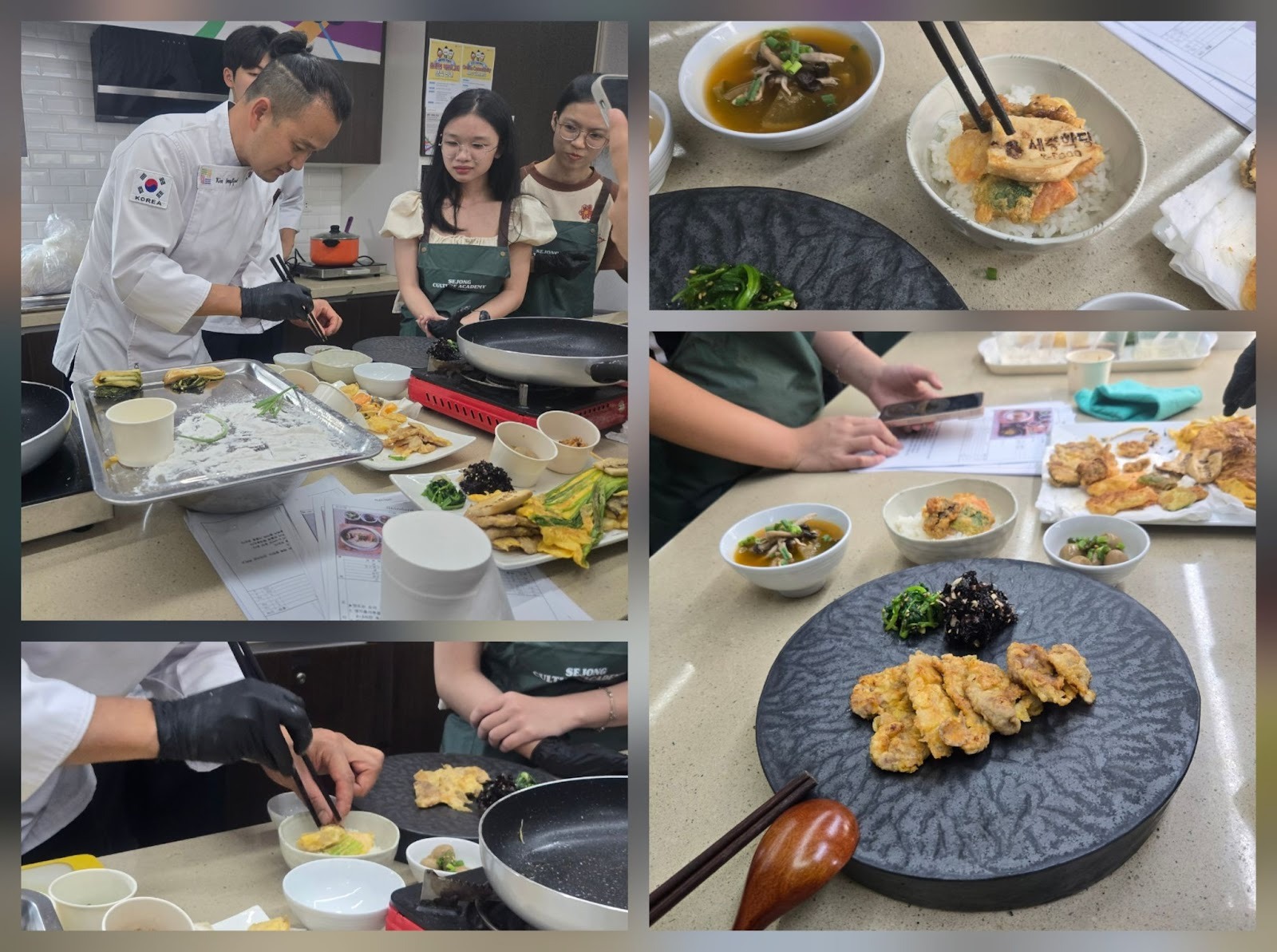
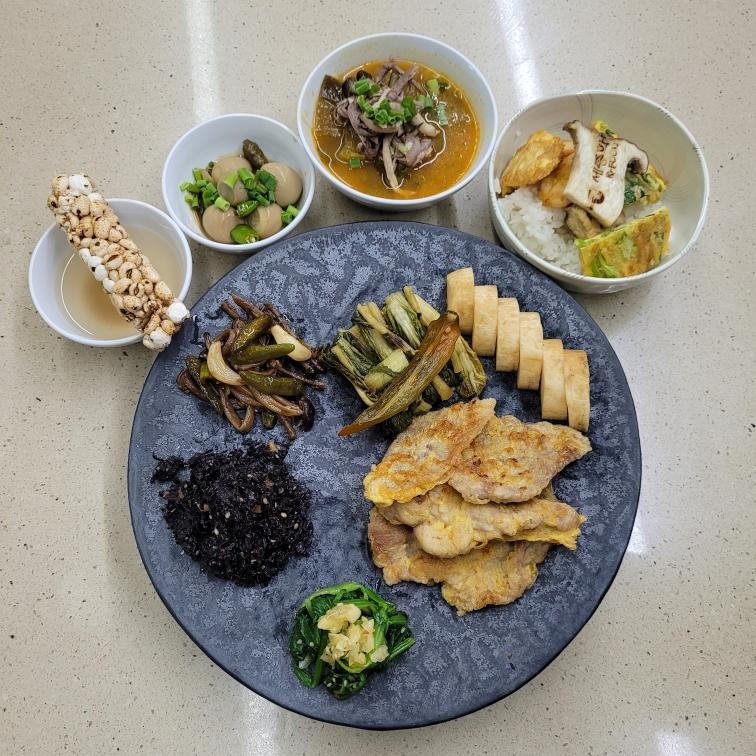
Closing the class, we brought home more than just a delicious traditional Korean meal—we carried with us joy, connection, and a deeper appreciation of Korean culture. By preparing, cooking, and sharing the dishes together, we learned that Hansik is not only cuisine but also a symbol of harmony and togetherness. This year’s Sejong Cultural Academy 2025 at the King Sejong Institute–KCC Vietnam thus became a meaningful bridge, nurturing love for the Korean language and culture while strengthening the friendship between Vietnam and Korea.
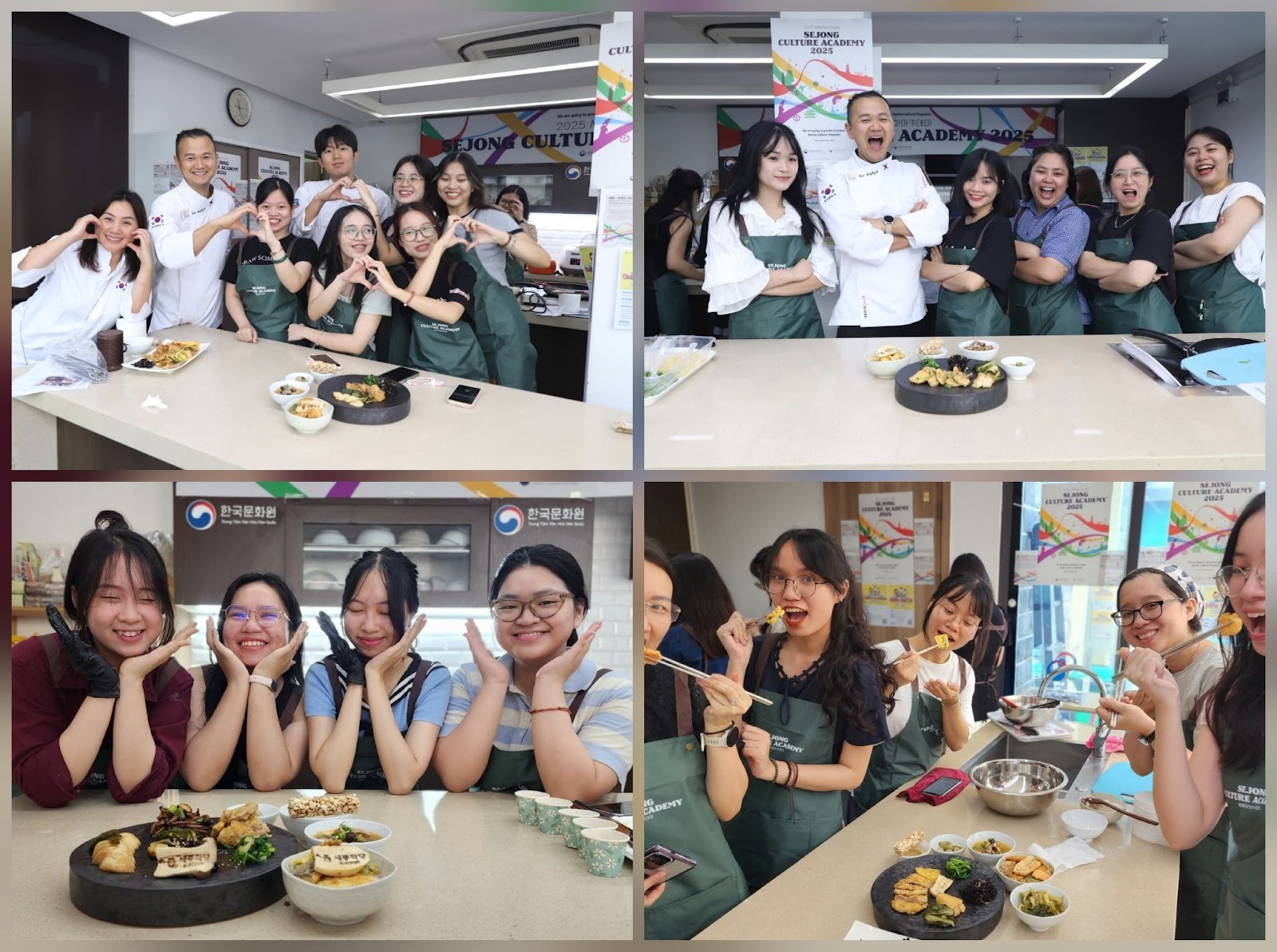
How about this article?
- Like0
- Support0
- Amazing0
- Sad0
- Curious0
- Insightful0


